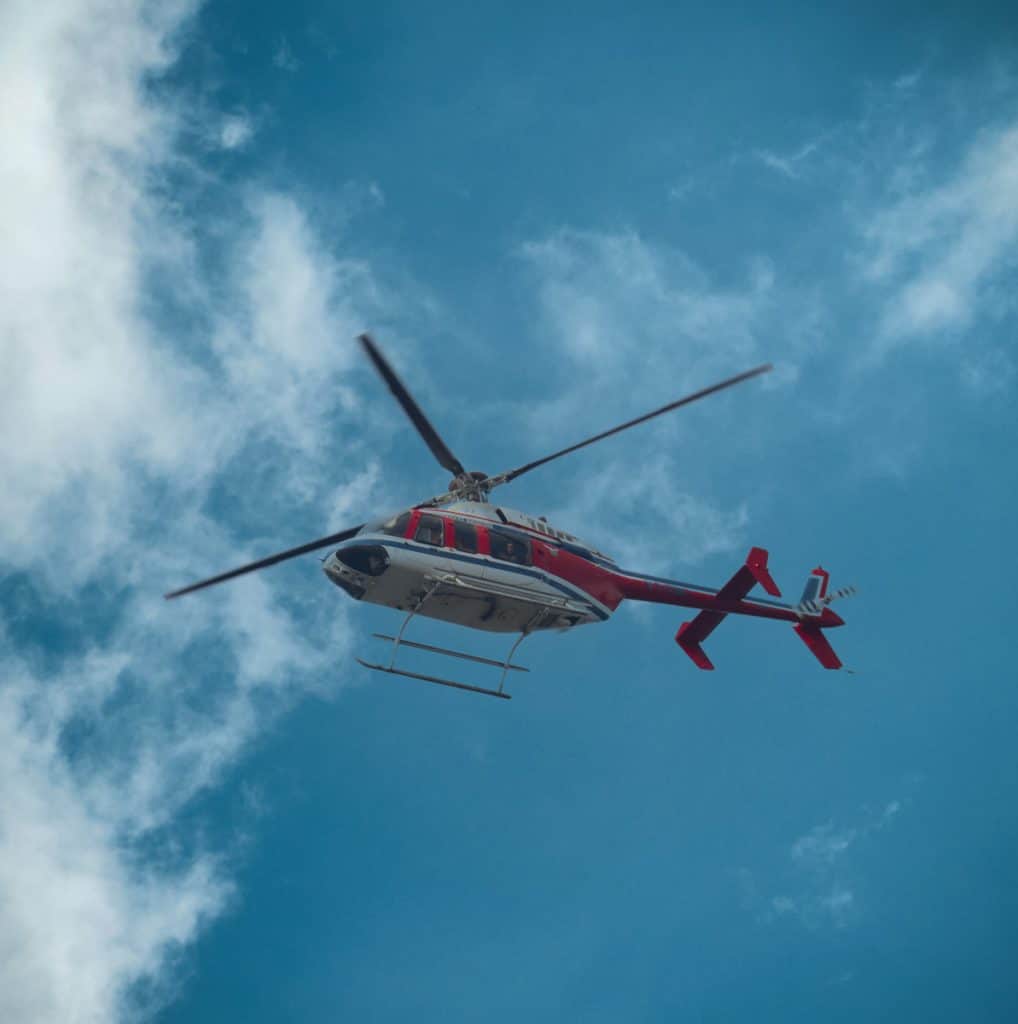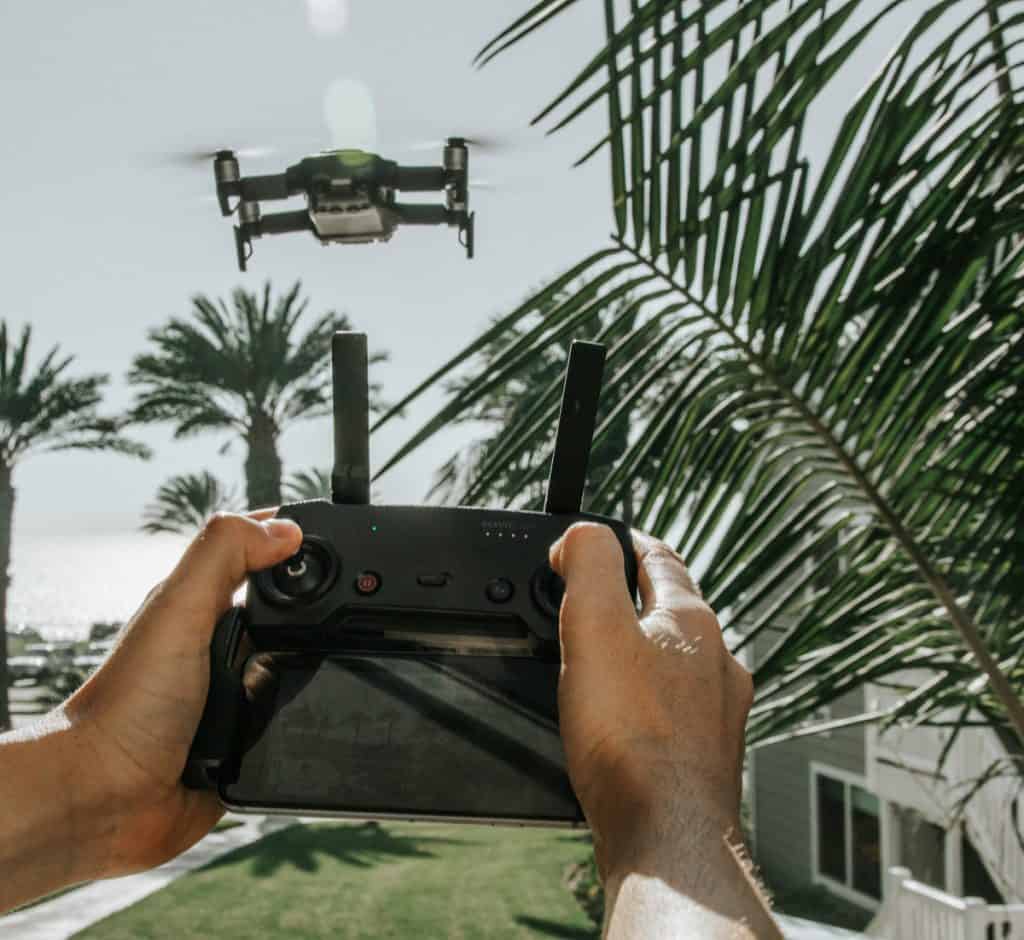You may have heard a ton of noise coming from above your head. In the past, it would have been easy to recognise this noise as an aeroplane or helicopter. However, as drones are becoming more and more popular, you may think it is a drones. I have been flying drones for several years. In this article, I will share the differences in noise texture and quality to identify the difference between a helicopter and a drone easily.
Drones and helicopters sound very different. Drones are quieter than a helicopter, and the primary sound they make is due to the propellers cutting through the air. Helicopters use petrol engines and have a much louder aerodynamic noise because of their weight.
The increased volume of a helicopter is due to the engine, which powers the rotors and the aerodynamic vortices created by the rotor blade as it spins rapidly through the air.
Let’s look at what causes the sound of a drone and a helicopter so that you can easily identify what is flying above your head.
The difference in sound
Many components differentiate the sound of a drone from a helicopter. This difference in sound is primarily due to the size of the vehicle. The amount of air that each needs to displace to keep it in the air is very different.
When air is being moved rapidly and displaced by rotors, it produces many vortices and aerodynamic changes, including changes in pressure and density of the air.
These quick changes of air pressure and the creation of vortices contribute to the characteristic signs of a drone and a helicopter.
Let’s take a look at what causes the distinctive sound of a drone and a helicopter.
What causes the sound of a drone
drones run on electric power, which is an almost silent energy form. The reason drones can be loud is that the propellers move through the air very quickly. The movement causes vibrations in the air surrounding the propellers, which causes a significant amount of noise and buzzing.
As propellers cut through the air in a circular motion, they cut through the same bits of the air time and time again, resulting in a pitch being generated. The faster the propellers spin, the higher the pitch. I have the DJI at Mavic air, and the smaller propellers combined with their increased frequency of rotation means that it sounds like a swarm of bees.
The main reasons the drone propellers make so much noise while they are hovering include:
- Propeller rotation frequency – as we talked about above, if the propellers whip through the air quickly, we get a higher frequency generated. There is not much you can do about the drone requiring a high rotational frequency. That is what keeps it in the air. However, you can choose a larger drone with a slower rotational frequency to avoid the high-pitched “swarm of bees” sound.
- Propeller blades passing over arms – one of the main reasons drones make a high sound is that the propeller blades have to pass over the arms that hold them out beyond the drone’s body. As the propeller blades pass over the arms, it temporarily creates a high-pressure system and stops producing pressure under the aircraft. This action creates a pressure wave and a sound that is of fairly low frequency.
- The drone’s size – its weight will dictate how fast the propellers have to spend to generate the downward thrust required for it to hover. If you are buying a heavy drone, the propellers will spin faster and will be much louder. Think of a helicopter as being the ultimate loud heavy drone for comparison.
- The propellers’ length, pitch, and depth –larger propellers displace more air while they spin, which means they produce more thrust and require less of a rotational frequency to keep the drone in the air. The sound is also changed by the angle, or pitch, of the propeller.
All of these factors play an important role in determining the sound of the drone.
What causes the sound of a helicopter
The main noise of a helicopter is created by its propellers. However, because of the size of the helicopter and the amount of upwards thrust that needs to be generated to keep the much larger mass in the air, the propellers make a much louder noise.

Almost everything you hear from a helicopter is aerodynamic noise. This noise comes from reduced pressure on top of the main rotor blades as it draws air upwards. This upwards movement of air creates a vortex. The blade tip vortex is directed downwards, and when other rotor blades come into contact with this vortex, the throbbing noise – characteristic noise of a helicopter – is produced.
The complicated aerodynamics involved in keeping a helicopter in the air means many frequencies and quick sounds are produced.
The main vortices that are created come from the blade and the blade tip:
- blade vortices – the vortices created off the back of each main rotor blade produces a blade vortex interaction. The vortices are created along the entire length of the blade, which creates a wall of vortices in the path of the next blade as the next spins around. The combination of the sound increases its volume.
- Blade tip vortices are the vortices created around the very tips of each main rotor blade. These can be seen as a helicopter flies in the humid air. These tip vortices can be intercepted by the following blade and interact with the tail rotor as well. When the helicopter has long main rotor blades, the blade tips can begin to reach the speed of sound. The advancing blade tip creates a loud snap after passing the sound barrier, causing another distinctive helicopter sound.
Lastly, a helicopter engine is very loud compared to the electronic drive system of a drone. The piston engines do not produce too much noise and often utilise mufflers to reduce the sound.
Gas turbine engines are very loud, and the noise levels can reach up to 100 dB and cause permanent hearing damage. Helicopter engines produce most noise from the air intake, the power turbine, and the exhaust.
If you want to know more about why a helicopter is so noisy, check out the YouTube video below. It is for children but explains the vortex issues very clearly and easily.
How to tell the difference between a drone sound and a helicopter sound
If there is a noise coming from above your head, here are the sound qualities that you should use to determine whether or not it is a drone or a helicopter. A drone that is close to you can sound like a helicopter that is far away. Listen for these particular attributes to determine which one you are experiencing.

Distance
Helicopter sounds travel much further than drone zones. The lower throbbing sound created by the vortices and air pressure carries much further.
I often hear helicopters before I see them, and the sound can be very loud if the helicopter travels directly above you.
While flying my drone, it becomes very hard to hear after it is only a couple hundred metres away from a person.
The higher pitch doesn’t carry as well through the air, and it means that a drone is very hard to hear if you are not stirred directly underneath the drone and it is far away from you.
Drones will often sound like a swarm of bees or a low hum and lack the characteristic throbbing, and with a helicopter.
Pitch
How low or high a sound depends on the frequency at which the helicopter or drone blades cut through the air.
A faster rotational speed typically results in a higher pitch unless the blades of a helicopter are particularly long. Smaller drone blades cause a much higher pitch than a helicopter blade.
The small drone blades have two rotate faster to cause the upwards thrust required to fly. Helicopters are very heavy, and the long blades can spin quickly. However, after a certain point from bracket above the speed of sound) the helicopter blades will cause a snapping sound due to the interaction of the blades with the vortices of the blades it is following.
Consistency
Drones tend to vary their noise a lot during the flight. The drone sound’s change in pitch and quality is due to the drone motors’ quick movements and rapid ramping. To move through the air, the drone changes the amount of power put out by its motors. This increasing and decreasing of the power output can easily cause the drone to change its pitch.
When I am standing near my DJI Mavic Air, I notice a huge increase in volume and pitch when I am accelerating aggressively.
Helicopters, on the other hand, have a much more consistent sound. The only thing that changes from a stationary observer perspective is the volume of the sound. The helicopter is unlikely to make significant changes to its rotor speed while cruising.
Frequently asked questions
Here are some frequently asked questions about drone flying and noise. If you want to know how you can make a drone quieter, check out my other article – click here – where I go through all of the ways you can make your drone much quieter.
Can you hear a drone flying?
You can hear a drone as long as it is within a couple of hundred metres of your location. This distance is extended if the drone is flying directly above you.
When I fly my DJI Mavic air, I often lose the drone even though it is in direct sight. I often use the noise of the drone flying to locate it in the air. After the drone is beyond approximately 200 m from my location, I cannot pinpoint it using the sound alone.
A drone is particularly easy to hear when it is making quick acceleration changes and directional adjustments. The quick ramping of the motor creates the characteristic drone moving sound, which is much easier to hear from a distance.
What kind of noise does a drone make?
Drones can make various noises that sound anywhere from a swarm of bees to a low-frequency hum. The type of noise that a drone makes depends on the propeller size and the size of the drone.
A larger propeller that spins slowly will create a lower frequency noise than a smaller drone with a smaller propeller.
The final word
In this article, we have investigated the difference between the sound of a drone and a helicopter. Drones are particularly light and therefore make less noise than a helicopter. A helicopter needs to move and displace a lot of air to remain airborne. This extra power required creates vortices, and the interaction of vortices with the helicopter blades produce the characteristic thudding sound.
![Do drones sound like helicopters? [EXPLAINED by Science]](jpg/do-drones-sound-like-helicopters-768x480.jpg)




